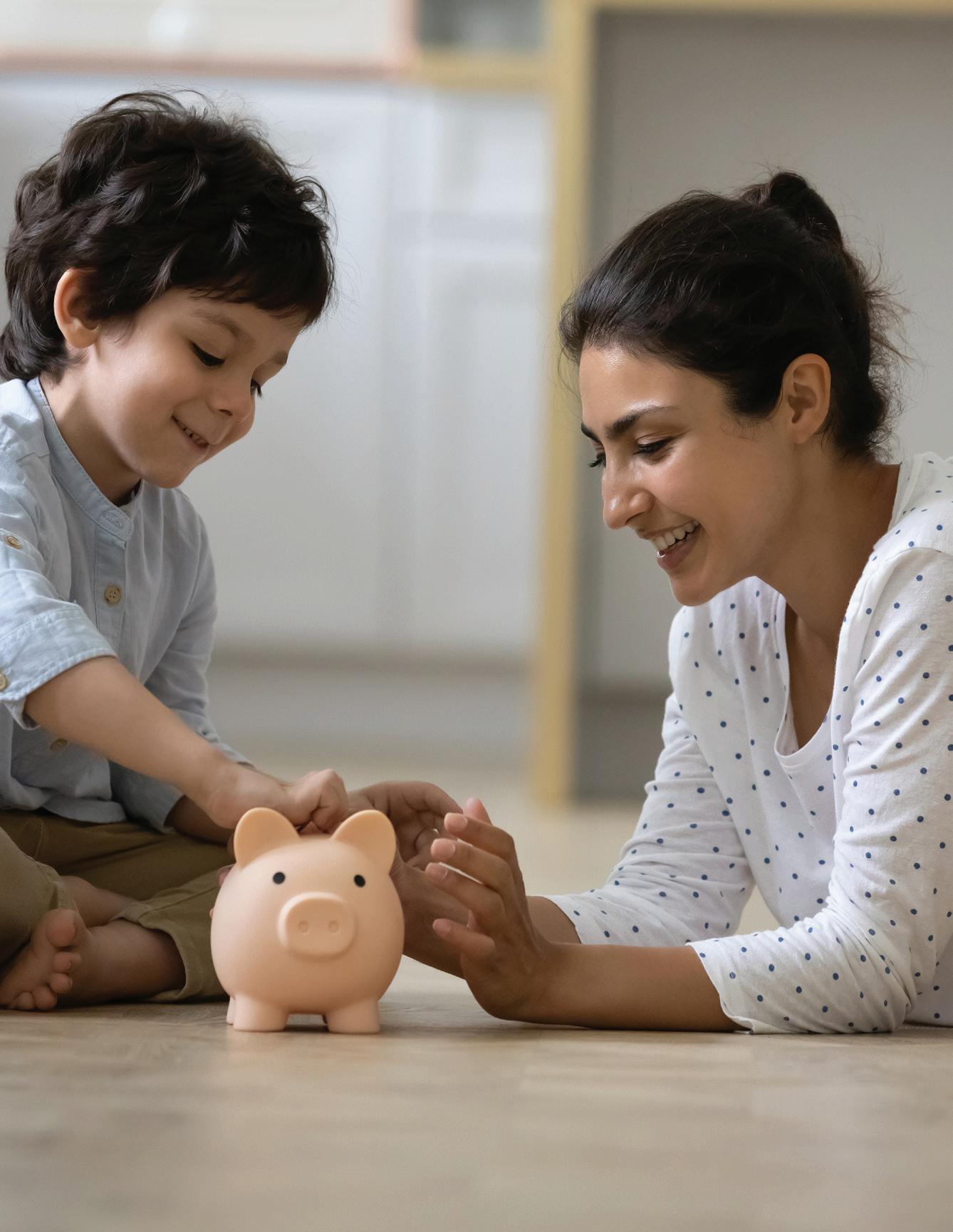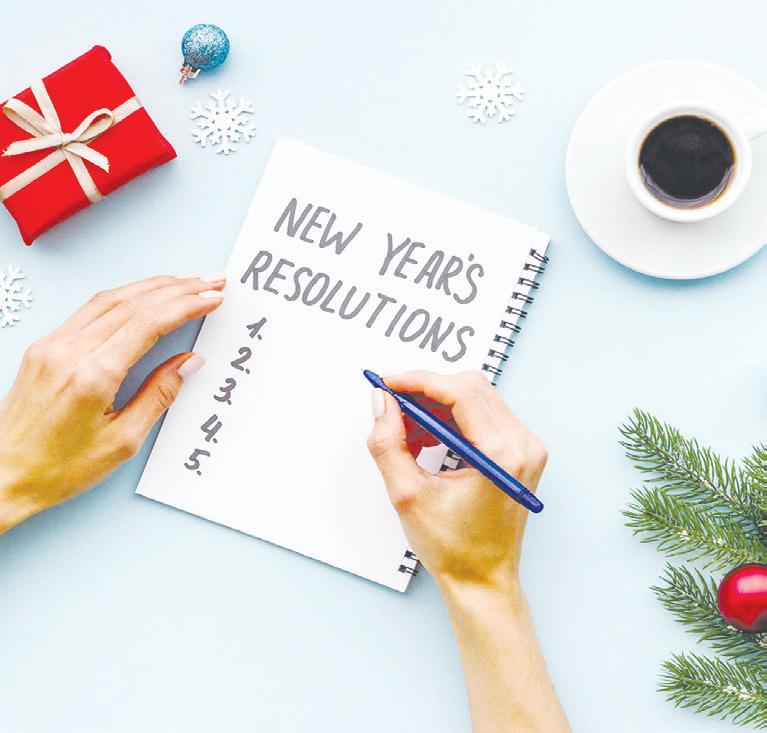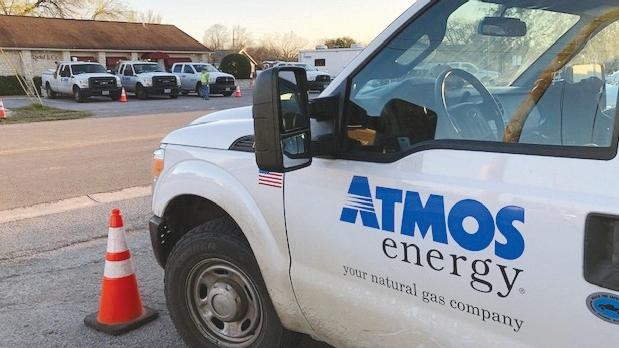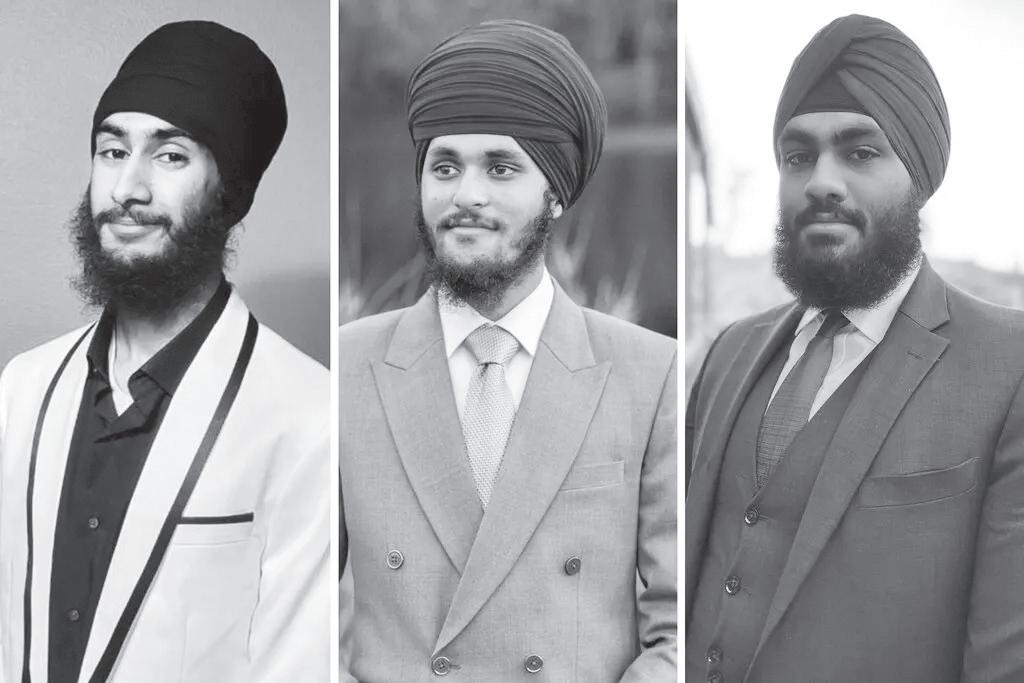
16 minute read
Tax Credits Increase
15 Austin South Asian | January 2023 New Tax Credits Increase Appeal Of Heat Pumps For Homeowners
More and more people are turning to heat pumps to heat and cool their homes. It is estimated that 18 million American households already use them.
With new energy incentives being offered, and more homeowners choosing greener technologies, that number is expected to rise dramatically.
What is a heat pump? Heat pumps are powered by electricity and transfer heat using refrigerant. Heat pump technology moves heat outside your home in warmer months and is able to pull heat into your home during cooler months. Here are three reasons to consider one for your home:
1. Sustainability. Heat pumps are electric and don’t burn fossil fuels like furnaces do, making them more environmentally friendly.
In fact, heat pumps are becoming the heating, ventilation, and air conditioning (HVAC) industry goto for reducing consumers’ carbon footprints. 2. Control.
Newer two-stage and variable speed heat pumps offer high- and low-stage heating to warm your space
when outdoor weather changes; they operate more efficiently for longer periods of time at lower speeds and use less energy.
They provide more precise temperature controls and more consistent comfort. Both options contribute to
Pyazi Kebabs
A common Pakistani vegetarian onion kebab with lemongrass and mint cooked in light oil. Served as an appetizer with a walnut, jaggery and tamarind sauce.
Ingredients of Pyazi Kebabs
1 Kg Onion (large), sliced 200 gram Lemon grass 1 tsp Red chilli (crushed) 5 Green chilli, chopped 2 tbsp Ginger, finely chopped For the Sauce:
200 gram Walnut (crushed) 1/2 Lemon juice 50 gram Jaggery (gur) to taste Salt 1 tsp Black pepper 2 Onions, sliced 100 gram Tamarind (imli)
Prepare Pyazi Kebabs:
1.Spread thin slices of onions on before cooking. 4.Make tikki and fry them twice in desi ghee.
Prepare the Sauce:
1.Take crushed walnut in a bowl and mix with lemon juice.
2.Add jaggery, salt and black pepper.
3.Boil this mixture in 1/2 cup water
200 gram Mint 1 tsp Cumin seeds (jeera) 200 gram Fresh coriander 1/2 tsp Nutmeg powder 1 1/2 cup Makai ka atta 1/2 cup Refined flour (maida) 1 tsp Sweet soda to taste Salt 1/2 kg Desi ghee a plate. Lightly rub with lemon grass, red chilli, green chilli and ginger, and keep aside for 5-10 minutes.
2.Then add sweet soda and all remaining spices except salt. Mix well. for 10 minutes.
4.Remove from heat and add thin onion slices while sauce is still hot
. 5.Soak tamarind in 1/4 cup water. Strain and add this tamarind water to the sauce. Mix again and serve with pyazi kebabs. (Courtesy: https://food.ndtv.com/) managing humidity levels too.

3. Technology.
Heat pumps today are more advanced than ever and handle both heating and cooling by redistributing air.
Carrier’s Infinity 24 Heat Pump with Greenspeed Intelligence operates at temperatures down to -15 degrees Fahrenheit, making heat pumps an advanced solution for mild and colder climates. Heat pumps, including installation, can range anywhere from $3,000 to $15,000 or more. Thankfully, there are many cost-saving options for homeowners.
The Inflation Reduction Act of 2022 includes federal tax credits that reward homeowners for purchasing certain high-efficiency HVAC equipment, including many of Carrier’s line of heat pumps. Up to $8,000 in tax credits are available for all-electric heat pumps.
Does your region get colder than that? Heat pumps can be combined with a gas furnace for a dual fuel system that is energy efficient and cost effective. Looking ahead, heat pumps that work in colder temperature are in development and will be available soon.
Get the Right Size
There are several factors that go into picking your ideal heat pump. The size of your home, climate, sun exposure, desired features and ductwork all play into the size of heat pump.
An undersized unit will work overtime to hit target temperatures.
A unit that is too large will achieve the desired temperature before its cycle is complete and waste energy.
It is best to work with a professional dealer in choosing the heat pump that is best for your home. Lower energy consumption means energy bill savings, up to $500 on energy bills every year in some cases. Look for Energy Star certification and Seasonal Energy Efficiency Ratio (SEER) ratings.
The SEER rating is like your car’s mileage per gallon – the higher the number, the greater the potential for savings.
Many manufacturers and utility companies also offer rebates and low-rate financing.
For example, Carrier’s heat pump rebate offerings are listed on their website.
At the time of this publication, up to $1,300 in rebates are being offered for most units.
Beyond the basics, today’s heat pumps offer new comfort-enhancing, energy-saving features that could help you reduce your heating costs. (Statepoint)
16 Austin South Asian | January 2023 Yoga For Diabetes: 5 Asanas For Managing The Condition
(Continued From Page 01)
Apart from medication, the patients are advised to lose weight, modify their dietary habits by incorporating low GI (Glycemic Index) foods in their diet, do yoga and other exercises to keep blood sugar level in check. While type 1 diabetes occurs when body stops making insulin as a result of autoimmune response, in type 2 diabetes which is more common in people, insulin resistance is developed due to which the sugar stays in the blood, instead of being utilized by the body and leads to many health problems. keep your spine erect.
Exhale and bend forward at the hip, placing your upper body on your lower body. Try to hold your big toes with your fingers.
Pregnant women should refrain from practicing this asana. Also those suffering from slip disc, sciatica or asthma should avoid doing this apart from ulcer patients.
3. Adomukhi Svanasana
Also known as Downward Dog, begin this asana on all fours and ensure that your palms are under the shoulders and knees below hips. Lift the hips up, straighten the knees and elbows, and make your body in the shape of an inverted ‘V’. Now keep the hands shoulders width apart. Keep your eye focused on your big toes.

Several studies have established the efficacy of Yoga in reducing blood glucose levels in patients with type 2 Diabetes. 1. Marjariasana
For doing Urdhva Mukhi Marjari Asana, come on your knees, place palms under shoulders and knees under hips, and then inhale, curve your spine to look up. This asana should not be performed in case you are suffering from carpal tunnel syndrome and/or diarrhea. Also avoid this asana in advanced stages of pregnancy.
If you have high blood pressure or headache, go slow and in case of chronic or recent injury to the arms, hips, shoulders and back, this asana must be avoided.
4. Balasana
For Adho Mukhi Marjari Asana, exhale, round your back and drop your chin to chest. Focus your gaze towards your navel region.
2. Paschimottanasana
Also known as seated forward bend, begin the asana by stretching your legs forward while ensuring that your knees are slightly bent. Raise your arms upward and It is also known as Child’s Pose. To perform this asana, kneel down on mat and sit on your heels. Inhale and raise arms above head, exhale and bend your upper body forward. Place your forehead on the floor resting your pelvis on the heels. Ensure that your back is not hunched.
5. Manduka Asana

Another name for this asana is Frog Pose. Begin this asana by sitting in Vajrasana, and extending your arms in front of you. Fold your thumbs into your palms, wrap the remaining four fingers over it and ball your fist. Bend your arms at your elbows, place your balled fists over your navel. Bend your upper body and place it over your lower body. Stretch your neck and focus your gaze forward.
Pregnant women should refrain from practicing this asana. Those who experience pain in the ankle or have recently undergone an injury or surgery to the ankles/ligaments, should avoid this asana.
In case of ulcer issues, one must avoid this asana. In case of pain or injury to knees or back, please refrain from performing this asana.
“Practise regularly holding each pose for 30 seconds and repeat for 3 sets. Poses such as HalfFish Pose (Ardha Matsyendrasana), Paschimottanasana, Adomukhisvanasana, Vajrasana etc. can be very helpful to prevent and treat diabetes.
Practice these asanas very slowly with awareness on your breathing,” says Grand Master Akshar. (Courtesy: https://www.hindustantimes.com/)

Padmanabhapuram Palace
Padmanabhapuram Palace, also known as Kalkulam Palace, is a Travancore era palace located in Padmanabhapuram in the Kanyakumari district of the Indian state of Tamil Nadu. The palace is owned, controlled and maintained by the government of the neighbouring state of Kerala. Padmanabhapuram is the former capital city of the erstwhile Hindu kingdom of Travancore. It is around 20 km from Nagercoil, 39 km from Kanyakumari town and 52 km from Thiruvananthapuram in Kerala. The palace is complex inside with an old granite fortress around four kilometers long. The palace is located at the foot of the Veli Hills, which forms a part of the Western Ghats. The river Valli flows nearby.
Another palace known as Kuttalam Palace is situated in Kuttalam in Tenkasi district, Tamil Nadu which is also under the ownership of Kerala government. It is situated in the Tenkasi District, Tamil Nadu (before state reorganisation, Kanyakumari District, Chenkottah Taluk, Tenkasi Taluk including the areas of Kuttalam are in the control of Travancore Kingdom in Kerala). It is owned, controlled and maintained by the Kerala Government.
The palace was constructed around 1601 CE by Iravi Varma Kulasekhara Perumal who ruled Venad between 1592 and 1609. The founder of modern Travancore, King Anizham Thirunal Marthanda Varma (1706–1758) who ruled Travancore from 1729 to 1758, rebuilt the palace in around 1750.
King Marthaanda Varma dedicated the kingdom to his family deity Sree Padmanabha, a form of Lord Vishnu and ruled the kingdom as Padmanabha dasa or servant of Lord Padmanabha. Hence the name Padmanabhapuram or City of Lord Padmanabha. In the late 18th century, precisely in 1795 the capital of Travancore was shifted from here to Thiruvananthapuram, and the place lost its former glory.
However, the palace complex continues to be one of the best examples of traditional Kerala architecture, and some portions of the sprawling complex are also the hallmark of traditional Kerala style architecture. The Palace though surrounded entirely by the State of Tamil Nadu is still part of Kerala and the land and Palace belongs to the Government of Kerala. This Palace is maintained by the Govt. of Kerala Archaeology Department. (Continued On Page 17)
Padmanabhapuram Palace
(Continued From Page16)
Unique rooms The Padmanabhapuram Palace complex consists of several structures:
Mantrasala; the King’s Council Chamber Thai Kottaram, constructed before 1550 Nataksala; the Performance Hall A four-storeyed mansion at the centre of the complex Thekee Kottaram; the Southern Palace
Central mansion:
The four-storeyed building is located at the centre of the palace complex. The ground floor houses the royal treasury. The first floor houses the King’s bedrooms. The ornamental bedstead is made of 64 types of herbal and medicinal woods, and was a gift from the Dutch merchants. Most of the rooms here and in other parts of the palace complex have built-in recesses in walls for storing weapons like swords and daggers. The second floor houses the King’s resting and study rooms. Here the King used to spend time during fasting days. The top floor (called upparikka malika) served as the worship chamber of the royal household. Its walls are covered with exquisite 18th century murals, depicting scenes from the puranas, and also few scenes from the social life of the Travancore of that time. The top floor was supposed to be Sree Padmanabha Swamy’s room. This building was constructed during the reign of King Marthandavarma. He was also designated as Padmanabha Dasa and used to rule the Travancore kingdom as a servant of Sree Padmanabha Swamy.
Southern Palace:
The southern palace is as old as the ‘Thai kottaram’ (Mother’s palace), which would make it about 400 years old. Now, it serves as a heritage museum, exhibiting antique household articles and curios. Collections of items give an insight into the social and cultural ethos of that period.
Uppirikka malika:
To the northwest of Thai Kottaram is one of the most notable parts of the royal complex, Uppirikka malika. Uppiri, which means ‘multi- storied’. Back in 1745, the then King Anizham Tirunal Marthanda Varma built this grand complex.
The ground floor of this Malika housed the coveted Tranvcore royal treasury. Above this treasury was the palace king’s bed chambers. Therein lies the famous sapramancha kattil. Supposedly, 64 timber samples with medicinal properties makes up this grand poster bed. A stair from the King’s room leads us to his fasting Chambers. This is where the King resided when he fasted in devotion.

Goddess Kaali Maa’s Gift To Tenali Rama
Tenali Ramakrishna was born in Thumuluru in the southern part of India. Legend has it that although he did not receive any formal education, he became a great poet because of Ma (goddess) Kali’s blessings. Here is the interesting story of Tenali Raman and goddess Kali.
One day, a great sage visited Tenali Ramakrishna’s village, and everyone in the village went to seek his blessings. Looking at Ramakrishna, the sage predicted that he would become a great poet.
He told him, “Rama, I will teach you an ancient mantra. Recite this for 1,008 times in the goddess Kali temple on the outskirts of the village. The Ma would appear and grant you wishes.”
Rama went to the goddess Kali temple the next morning. He sat in front of the idol with his eyes closed and recited the mantra for 1,008 times, with utmost devotion. After some time, he heard a voice calling him, “Rama, Rama.”
Ramakrishna opened his eyes, and in front of him was goddess Kali, with all her 1,000 heads and multiple arms!
Suddenly, Ramakrishna began to laugh uncontrollably. Puzzled, the goddess asked, “Why are you laughing, Rama? What is so funny?” Ramakrishna apologized for his behavior and said, “Oh, Kali Ma, I was thinking about what would happen if you catch a cold, and imagined you sneezing with all your thousand noses.”
Goddess Kali too laughed at his joke and said, “Rama, I like your sense of humor. I have come to grant you wishes. Look! I have two bowls in my hand; one contains sweet milk.
Upon drinking it, you would acquire great knowledge of the world. And the other bowl contains curd, which would give you wealth. But you can choose only one bowl, so think carefully and pick one.”
Rama stayed silent for some time thinking, and then replied, “Kali Ma, can I taste both before drinking them?”
The goddess agreed and gave him both the bowls. Before the goddess Kali could realize what Rama was doing, he drank from both the bowls.
The annoyed ma said, “Rama! Why did you drink from both the bowls and disobey my orders?”
Rama bowed his head and replied, “I am sorry Ma Kali, but what is the use of knowledge without wealth, and what would I do with wealth without knowledge?”
Goddess Kali was impressed by his quick thinking and intelligence and blessed him, saying that he would become a great poet and would be known for his intelligence and sense of humor.

18 Austin South Asian | January 2023 Republic Day - India
(Continued From Page 01) Constituent Assembly on 26 November 1949 and came into effect on 26 January 1950. 26 January was chosen as the date for Republic Day as it was on that day in 1930 when the Declaration of Indian Independence was proclaimed by the Indian National Congress.
India achieved independence from the British Raj on 15 August 1947 following the Indian independence movement.
The independence came through the Indian Independence Act 1947 (10 & 11 Geo 6 c 30), an Act of the Parliament of the United Kingdom that partitioned British India into the two new independent Dominions of the British Commonwealth (later Commonwealth of Nations).
India obtained its independence on 15 August 1947 as a constitutional monarchy with George VI as head of state and the Earl Mountbatten as governor-general.
The country, though, did not yet have a permanent constitution; instead its laws were based on the modified colonial Government of India Act 1935. On 29 August 1947, a resolution was moved for the appointment of Drafting Committee, which was appointed to draft a permanent constitution, with Dr B R Ambedkar as chairman.
While India’s Independence Day celebrates its freedom from British Rule, the Republic Day celebrates the coming into force of its constitution.

A draft constitution was prepared by the committee and submitted to the Constituent Assembly on 4 November 1947.
The Assembly met for 166 days in public sessions spanning two years, 11 months, and 18 days before adopting the Constitution.
Kids Corner

Vasundhara Varadarajan
The 308 members of the Assembly signed two handwritten copies of the document (one in Hindi and one in English) on 24 January 1950, after much deliberation and some changes.
Two days later which was on 26 January 1950, it came into effect throughout the whole nation.
On that day, Dr. Rajendra Prasad’s began his first term of office as President of the Indian Union.
The Constituent Assembly became the Parliament of India under the transitional provisions of the new Constitution.
On the eve of Republic Day, the President addresses the nation.
On November 25, 1949, in his final speech to the Constituent Assembly, Dr B R Ambedkar remarked about the potential and pitfalls of life after January 26, 1950,
On the 26th of January 1950, we are going to enter into a life of contradictions.
In politics we will have equality and in social and economic life we will have inequality. the principle of one man one vote and one vote one value.
In our social and economic life, we shall, by reason of our social and economic structure, continue to deny the principle of one man one value.
How long shall we continue to live this life of contradictions? How long shall we continue to deny equality in our social and economic life?
If we continue to deny it for long, we will do so only by putting our political democracy in peril.
We must remove this contradiction at the earliest possible moment or else those who suffer from inequality will blow up the structure of political democracy which is Assembly has to laboriously built up.
The main Republic Day celebration is held in the national capital, New Delhi, at the Rajpath before the President of India.
On this day, ceremonious parades take place at the Rajpath, which are performed as a tribute to India; its unity in diversity and rich cultural heritage.
On the eve of Republic Day, the President of India distributes Padma Awards to the civilians of India every year.
These are the second highest civilian awards in India after Bharat Ratna. These awards are given in three categories, viz. Padma Vibhushan, Padma Bhushan and Padma Shri.
The decoration comprises a sanad (Certificate) issued under the hand and seal of the President and a Medallion.
The recipients are also given a replica of the medallion, which they can wear during any ceremonial/ State functions etc., if they desire.
A commemorative brochure giving out brief details in respect of each award winner is also released on the day of the investiture ceremony.









